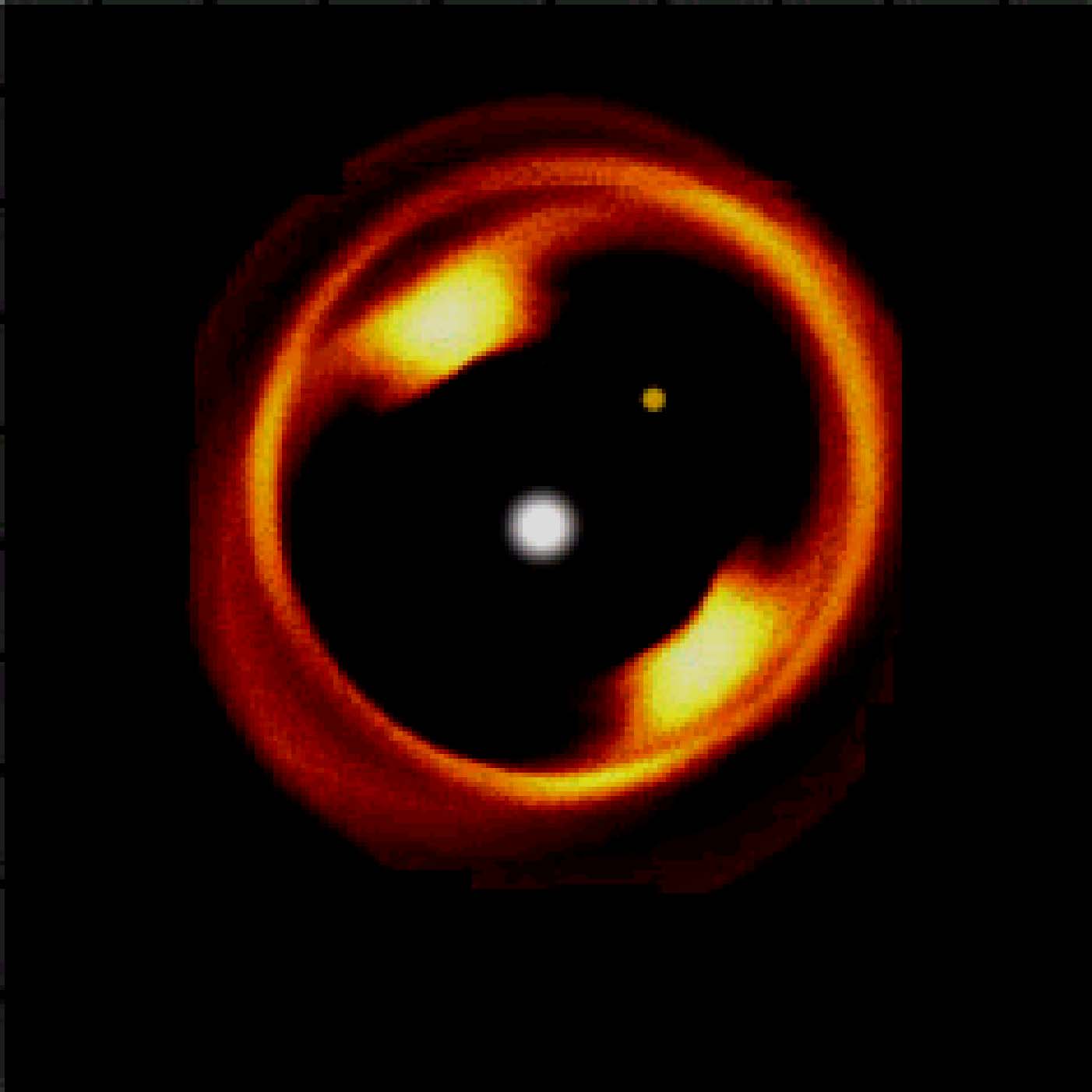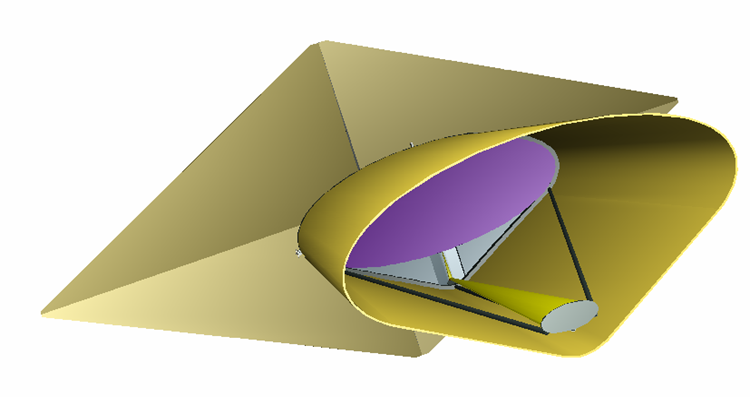 Charles A. Beichman
Charles A. Beichman
Executive
Director, Michelson Science Center, California Inst. of Technology, and Jet
Propulsion Laboratory
chas@pop.jpl.nasa.gov
Disclaimer: "Opinions expressed on this page are
my own, not those of NASA, the California Inst. of Technology, or
the Jet Propulsion Laboratory."
My research goals include searching for planets and evidence for planets such as debris disks around nearby young stars. Additionally, I am interested in understanding the formation and evolution of distant infrared-bright galaxies and their relationship to the Cosmic Infrared Background. These interests have led to my involvement in a number of space-based and ground-based astronomical missions, including:
- Infrared Astronomical Satellite (IRAS)
- 2 Micron All Sky Survey (2MASS)
- Spitzer Space Telescope (neé SIRTF), including Disk Volume Limited Survey (VLS)
- Space Interferometer Mission (SIM), including SIM Planets Around Young Stars (PLAYS)
- The James Webb Space Telescope (JWST)
- Terrestrial Planet Finder (TPF): At present
(2/2006) NASA has decided to defer indefinitely the TPF project.
This is only a minor roadblock in a 2500 year quest.
Some Topical Items:
CAB Presentation to Astrophysics Subcommittee of NASA Advisory Committee (NAC) 7/7/2006
New York Times on Space
Science Cuts, including TPF (
Nature Article and Editorial About NASA Cuts and TPF
CAB Wall Street Journal Op-Ed (8/2005)
Comparative Planetology (Protostars and Planets V)
Update on Finding Terrestrial Planets with SIM
Submission to HST-JWST
Transition Panel.
Update on Selection of Terrestrial Planet
Finder-C (Coronagraph)
Elizabeth K. Holmes (1973-2004)
All of Beth's friends and colleagues were deeply saddened
by her sudden death in March 2004. Beth had been working
with me on a Spitzer program to study debris disks around nearby stars.
Relevant sites include a memorial by
her fiancé, Todd Rope, and
her official AAS Obituary.
IRAS
As science instrument representative and eventually project scientist on the
Infrared Astronomical Satellite (IRAS), I was
privileged to take part in the NASA, UK, Dutch experiment that performed
the first sensitive survey of the infrared sky in 1983.
|
|
|
A gallery
of IRAS images shows some of the spectacular data obtained with the satellite.
IRAS data can be found at the GATOR
service at the Infrared Processing and Analysis Center (IPAC).
 2MASS
2MASS
Following the success of the IRAS survey, a number of astronomers began
planning for a ground-based survey to map the entire sky at shorter wavelengths
more easily accessible through the Earth's atmosphere. Observations began in
1997, were completed in 2001, and the final catalogs and images were released
in 2003. 2MASS detected more than 500 million individual objects and produced
more than 1 million images. Various collaborators and I used 2MASS to
identify two new spectral types of stars (L and T brown dwarfs with Kirkpatrick,
Reid, Cutri, Skrutskie) as well as to detect the near-IR Cosmic
background (with Cambresy, Reach, Cutri). Here are a few key 2MASS websites:
- 2MASS Data.
- 2MASS Image Gallery
- A description of 2MASS
- The definitive paper describing 2MASS has just been published (Skrutskie et al 2006)
Data from a recent 2MASS paper (Beichman et al 2003, AJ, 125,2521) relevant to SIRTF surveys of the Lockman Hole is available from the IRSA archive.
2MASS observations of other galaxies have been used by Cambresy et al 2005 to estimate total extinction on in Milky Way.
 SIRTF
SIRTF
The first professional meeting I ever attended as a graduate student as a
conference at the Ames Research Center in 1975 on the topic of the Shuttle Infrared
Telescope Facility, also known as SIRTF. This mission has evolved into the Space Infrared Telescope Facility
and was renamed as the Spitzer
Space Telescope after its launch in August 2003, more than a quarter
century after that first meeting. My primary scientific involvement in
Spitzer is through the University of Arizona instrument called the Multiband
Imaging Photometer for SIRTF (MIPS)
which will make observations at 24, 70 and 160 microns. Key projects I am
involved in include:
Recent papers in this area include:
- Search for Asteroid Belt Analogs (Beichman et al 2006, in press)
- Results of a Survey for Debris Disks Around FGK Stars (Bryden et al 2006)
- Asteroid Belt Around HD 69830 (Beichman et al 2005)
- Infrared Excesses Around Planet Bearing Stars (Beichman et al 2005)
 SIM
SIM
The primary goal of the Space Interferometer Mission (SIM) is to find
planets of a few Earth-masses around nearby stars using the wobble induced in
the position of the parent star by the presence of one or more planets. In
addition, SIM will carry out an exciting program of fundamental astrophysics.
The goal of the SIM-Planets Around Young Stars (SIM-PLAYS) Key Project is
to find planets around stars like our sun, but ones that are only a few
million years old to understand the formation and evolution of planetary
systems (Disk image from Geoff Bryden). The project involves researchers
from around the country in an intensive program of precursor science as well as
with observations with SIM starting around 2010.
A brief description of the project can be found here. A listing of potential SIM-PLAYS target stars is also on-line.

JWST
The successor mission to the Hubble Space Telescope (HST) will be the James
Webb Space Telescope (JWST). JPL
is the lead center for the mid-IR instrument (MIRI) so I have a close
institutional interest in the project. Scientifically, I am a member of the
University of Arizona-led team that is developing the near-IR camera (NIRCAM) for JWST. I plan to
use JWST to use MIRI and NIRCAM to look for planets, orbiting disks of
dust that may accompany planets (as in this model for the debris disk around
Vega from Marc Kuchner), and distant galaxies with unprecedented sensitivity
when JWST launches around 2011.
JPL scientist Joe Green and I, along with other members of the NIRCAM team, have worked to design a coronagraph for NIRCAM that will be able to look for hot Jupiters around nearby
young stars.
TPF
I have been with the Terrestrial Planet
Finder (TPF) since its inception following the report of the
Exploring Neighboring Planetary Systems (ExNPS) study in 1996. The goals of TPF
are simple to state --- to find and characterize Earth-sized planets around
nearby stars looking for habitable planets and even for signs of life---but
devilishly difficult to achieve. We have had 3 major studies of possible
TPF architectures since then. Following assessments of two different designs
for TPF --- an IR interferometer and a visible light coronagraph --- NASA
recently announced that a coronagraph would be the first mission
to detect earth-like planets directly with a launch around 2014. This mission
would be followed by an IR
interferometer to be developed jointly with the European Space
Agency for a launch around 2019. Together, the data from these two
wavelength bands would provide a complete characterization of any detected
planets as well as a robust search for life. Descriptions of the overall
goal of finding habitable planets around nearby stars and the TPF project can
be found in a number of the following articles. The fact that NASA has elected
to defer TPF “indefinitely”
should not discourage us in what
is, after all, a 2500 year old quest.
Protostars and Planets V: Comparative Planetology and the Search for Life Beyond the Solar System
Illustrated PowerPoint Talk at Santa Cruz, Summer 2003
Conference Talks:
Manchester, IAU 2000
BioAstronomy conference at Hamilton Island, Summer 2002
Hubble Legacy Conference 2003
TPF/Darwin Conference Talk in Heidelberg,
Summer 2003
Spring 2004: Update on Selection of
Terrestrial Planet Finder-C (Coronagraph)
|
|
|
Contact Information:
Michelson Science Center
California Inst. of Technology
Phone: 626-395-1996
e-mail: chas@pop.jpl.nasa.gov



